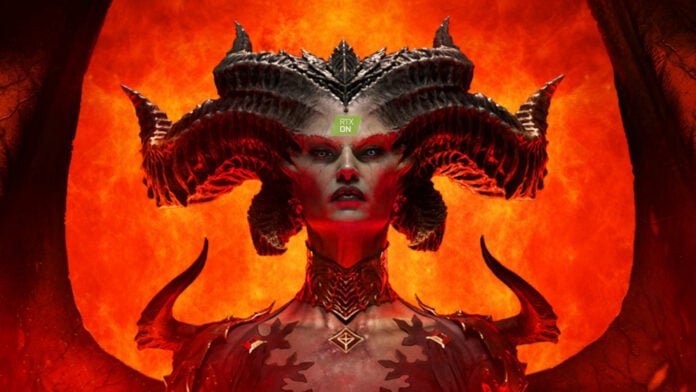Diablo IV is getting new visual improvements, further enhancing its shadows and reflections. Available on PC and consoles, this update integrates ray-traced effects to an already gorgeous game.
As of patch 1.3.5, Blizzard is enhancing Diablo IV with ray-traced shadows, ray-traced reflections, ambient occlusion, and contact shadows. Let’s compare the differences before (left) and after (right). Starting with ray-traced shadows, the further you look from the base of the tree, the softer the shadows become.
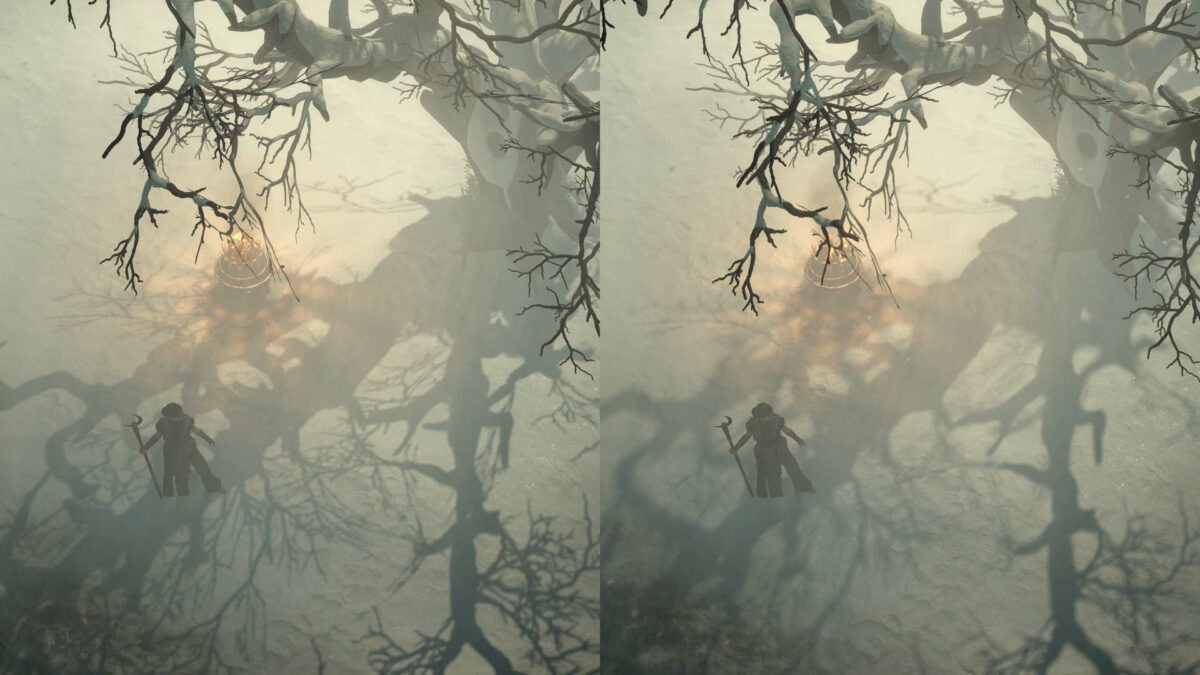
Same for the next picture, where the tower shadow gets softer the further it is.
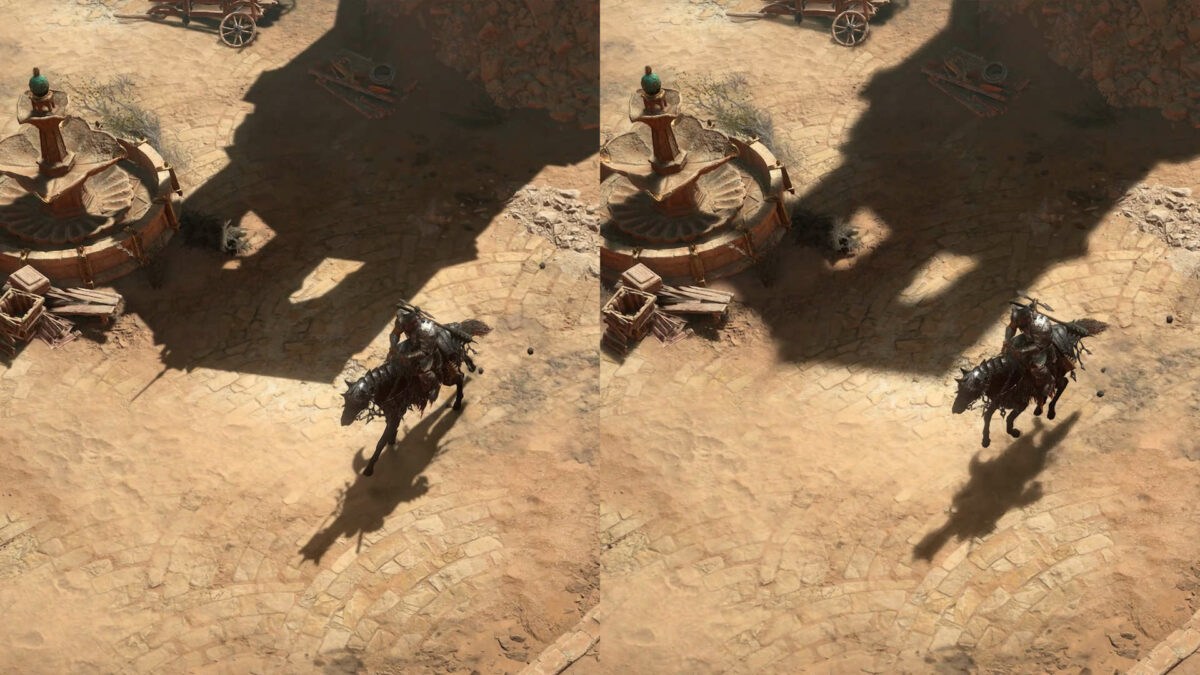
I must admit I prefer the non-RT shadows. I find their sharper look better as they contrast perfectly with the world, unlike the fuzzier RT ones. However, there is one instance where I liked the RT version more – the statue shadow in the picture below. So, it’s up to you to see if you like it or not. Also, keep in mind that these pictures are compressed and do not perfectly represent the real quality.
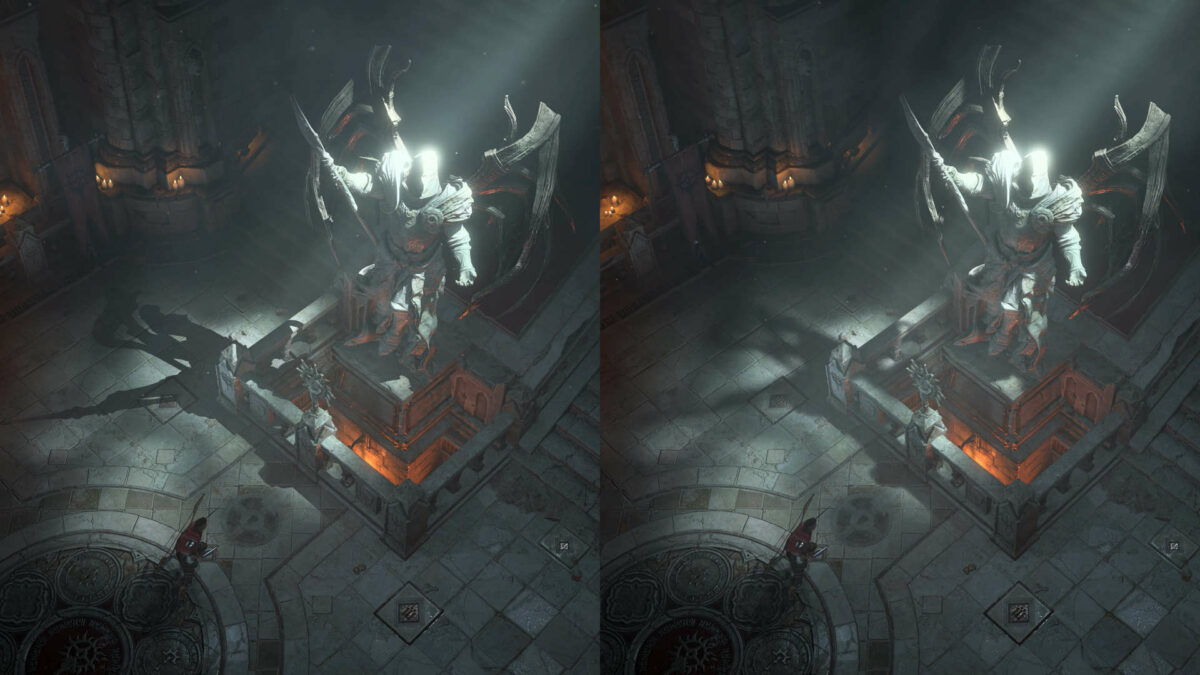
Next, we have ray-traced reflections, which are best seen in ponds or through a mirror. They are less prone to occlusion problems found in other techniques, allowing you to see parts of the environment that didn’t show previously.
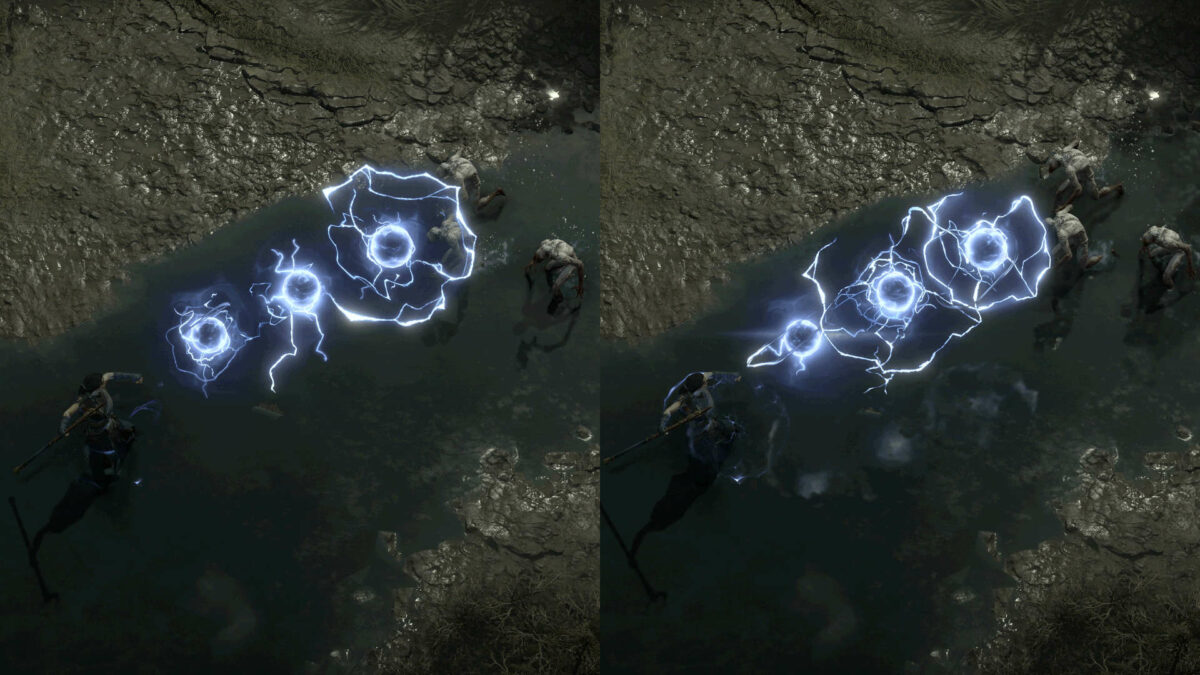
While Diablo IV already had ambient occlusion, this update brings a more defined result. Now surfaces are better shadowed from light sources (right side).
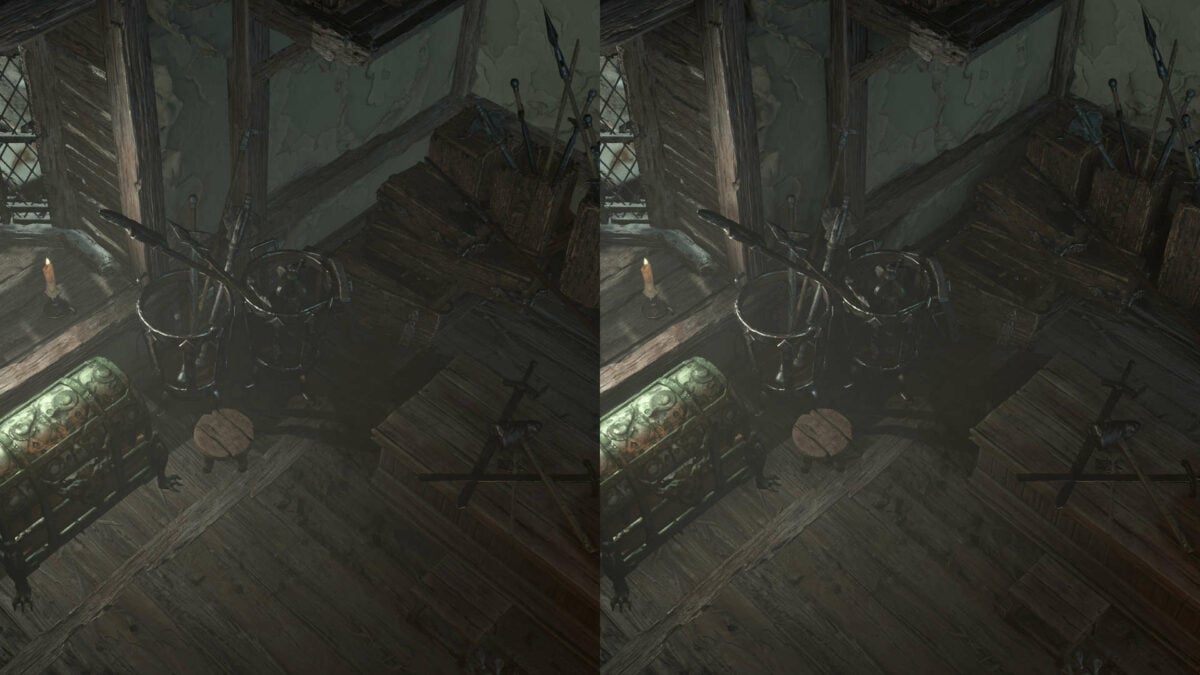
Lastly, we have contact shadows. This is another graphic feature that is not new in Diablo IV, though this time used on more characters. Previously, contact shadows only displayed the shadows around player characters. Now—at the highest graphics settings—it includes shadows for all player characters, NPCs, and Monsters.
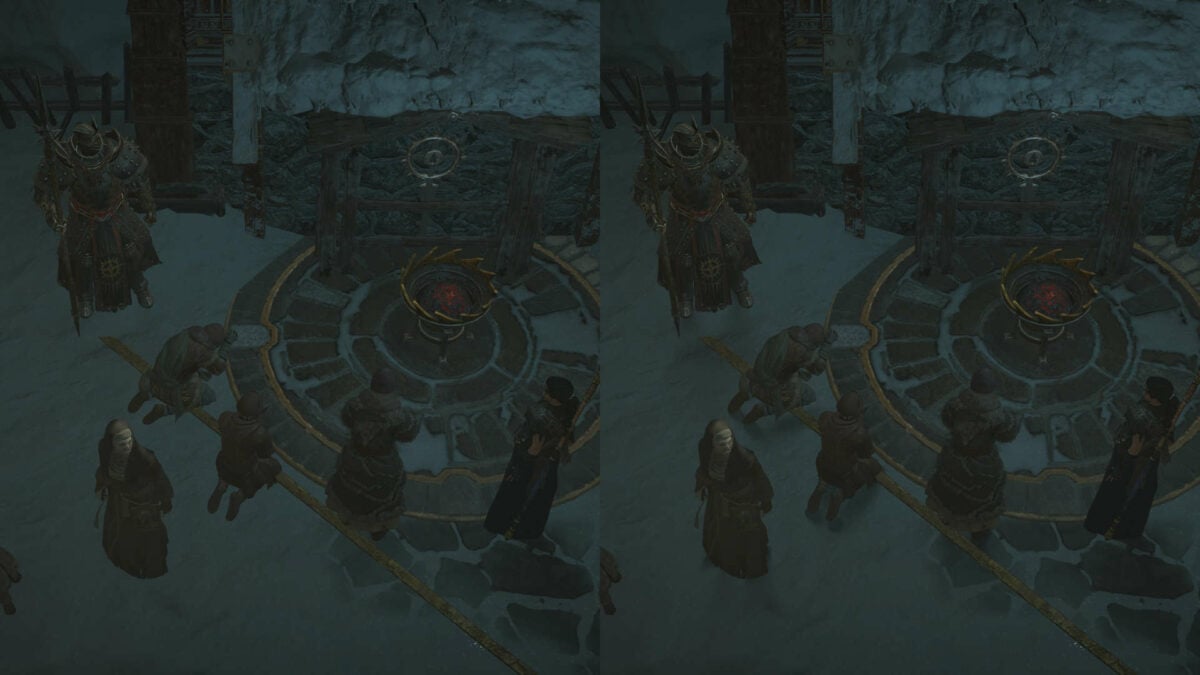
Blizzard doesn’t indicate how much these improvements impact performance, but you can use DLSS 2 to claim back some frames. If you’re the lucky owner of an RTX 40 Series GPU, you can also enable DLSS Frame Generation. Alongside DLSS upscaling, this can as much as triple your fps. Moreover, there’s Nvidia Reflex if you want to reduce system latency for more responsive gameplay.
That said, if you don’t own a powerful enough GPU to run these ray-traced features, don’t be sad. You might not even notice them in the heat of battle. Diablo IV is a chaotic game with many effects and particles going everywhere. You won’t have time to contemplate them since the next enemy is right around the corner.
On console, you can enable these features by going to the Graphics Tab, then under Performance, select Enhanced Visuals. However, note that when enabled frame rate will become locked at 30fps.
Lastly, we remind you that Diablo IV is heading to Xbox Game Pass on March 28. It’s the first Activision Blizzard game to join the platform, with hopefully many more to come. This way you can enjoy it without extra charges.

